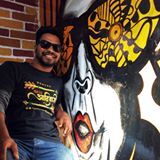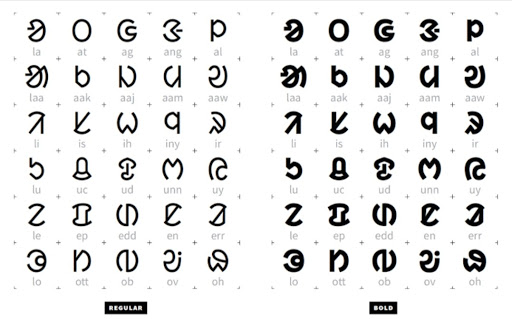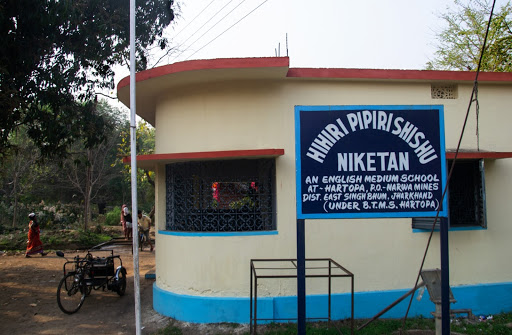This Olchiki script expert is paving the path for preserving Adivasi languages in Jharkhand
Durga Prasad Murmu is an expert on the Olchiki script written by the Santhal Adivasi community. He is also a Santhali singer, a poet, a language expert, a school teacher and a music teacher


The Olchiki Script
Indigenous languages across the world are disappearing at an alarming rate. Seeing the urgency and importance of this issue, the United Nations declared the year 2019 as the International Year of The Indigenous Languages. This was great news for tribals and indigenous people across the world. Shortly after, the UNESCO decided it was time to dedicate an entire decade to indigenous languages.
Considering this incredible declaration, I decided to meet an Adivasi language expert to hear about Adivasi scripts and languages and learn the importance of a language and script in the Adivasi community.
Durga Prasad Murmu is an expert on the Olchiki script of the Santhali language spoken by the Santhal Adivasi community. Murmu is one of the most multi-talented people I know – he is a professional Santhali singer, a poet, a language expert, an author, a school teacher and also a music teacher. He is a treasure in the Adivasi community of Jharkhand. He is well-known for being the disciple of Pandit Raghunath Murmu who is the founder and inventor of Olchiki. He is also known for airing Santhali songs on Radio FM Kolkata during the 1980s.

When I was 10 or 11, there was a social gathering of activists and artists, a type of Samvaad, and a picnic in my village organised by the JOAR (Jharkhandi Organisation Against Radiation). Many people gave speeches and were performing songs from their community and it was at that moment when I saw Durga ji singing a beautiful Santhali song, playing a ‘Banaam’ – a traditional violin and that was the first time I’d ever heard anyone playing that instrument. Since then, I knew him as the Violin Man.
The idea of interviewing a childhood idol excited me and I couldn’t wait for the day of the interview to arrive. When it finally did, I cycled my way to his house, which is about a seven-minute ride from my home. When I arrived, Durga ji was lying on a ‘Parkom’ khatiya in his courtyard. He was happy to see me and called his wife to meet me. She gave me Lota Pani, which is a way tribals in our village greet and welcome guests. I washed my hands and feet and aunty also offered me some snacks.
He was glad to know I’ve become a journalist. After catching up, I asked him about his work.

Durga Ji, what are you working on nowadays?
As a part of my contribution to the Adivasi community, I have been writing many books in Olchiki. I also run a primary school, the Hihiri Pipiri Shishu Niketan School, which helps students and parents who cannot afford expensive education. I started the school in 2000, so it’s almost 20 years now. Kids in Hihiri Pipiri primary school study in three languages — Santhali, Hindi and English.
My motive was to start a school where kids from the Santhal community get primary education in their own mother tongue. I am not doing this for any profit in terms of income, I am doing this for my own satisfaction.
Along with running the school, I also conduct music classes at home, where I teach the ‘Banaam’ and ‘Tiriyo’ which are the traditional violin and flute of the Adivasi community.

Apart from this, I am also associated with the Jharkhandi Organisation Against Radiation with social activist Ghanshyam Birulee and we have tried to send across messages to the government to acknowledge the reality of Adivasis living in the Jadugoda live uranium mining facility and how they are being affected by uranium radiation.
You are known as the disciple of Gomke Raghunath Prabhu. Please tell us about your work with him
I completed my teacher training in Olchiki in 1973. Shortly after, I started to teach people and I’ve successfully taught about 400-500 students. From 1976 to 1977, I stayed with Gomke Raghunath Murmu at his home and wrote three books in this duration. The three books were “Sidhu Kanhu Santhal Hul”, “Ronorputi” (grammar/ व्याकरण), and the third book was “Madang Hating Dusor Hating Teesar Hating”. However, these books weren’t written by me per se. Gomke Raghunath Murmu dictated every word and sentence and my work was only to pen down what he said. We had to write the books this way because he was unable to write it himself to his weakness.

Why are language and scripts so important for Adivasi communities?
Gomke Ranghunath Murmu said “If you have a script, a language and a religion, you exist, your identity exists. If you lose your language, your script, your religion, you and your identity are lost as well.”
He also used to say, “Language and script are like a man with eyes and vision. Without the eyes, the man can’t see anything, he can’t reach his destination.” Similarly, if a community does not have eyes, the community will not be able to see the path on which it walks and it cannot find a way to reach its destiny.”

Adivasis who are living in cities and towns are forgetting their mother tongues. What do you have to say about this?
These are the people that want to look modern, want to look good. They want to be like peacocks with beautiful features, but those who have forgotten their mother tongues and roots are like peacocks who have shed their beautiful features. Many have realised this and have started to come back to their roots. They have understood that a script brings identity to a language and when the majority speaks their own language and writes in their own script, the government has no choice but to give the language official recognition.
Santhali is one of the prominent Adivasi languages, which has received national recognition and is now among the 22 official languages included in the Eighth Schedule of Indian Constitution.
It is the duty of Adivasis and tribals of this generation to keep the work of pioneers like Mr Durga Prasad Murmu going to preserve their identity and languages. If we won’t do it, who will?
This article has been sourced from Youth Ki Awaaz-Adivasi Lives Matter, with permission from Adivasi Lives Matter. You can read the original article here.

